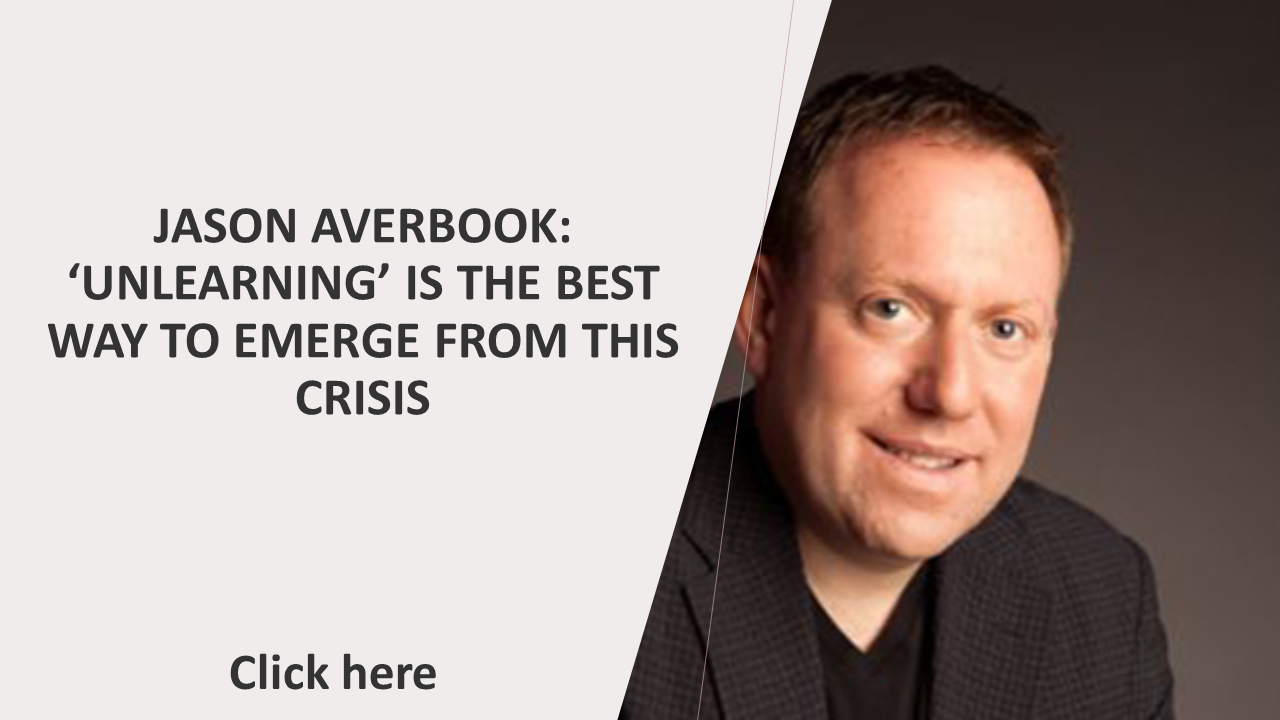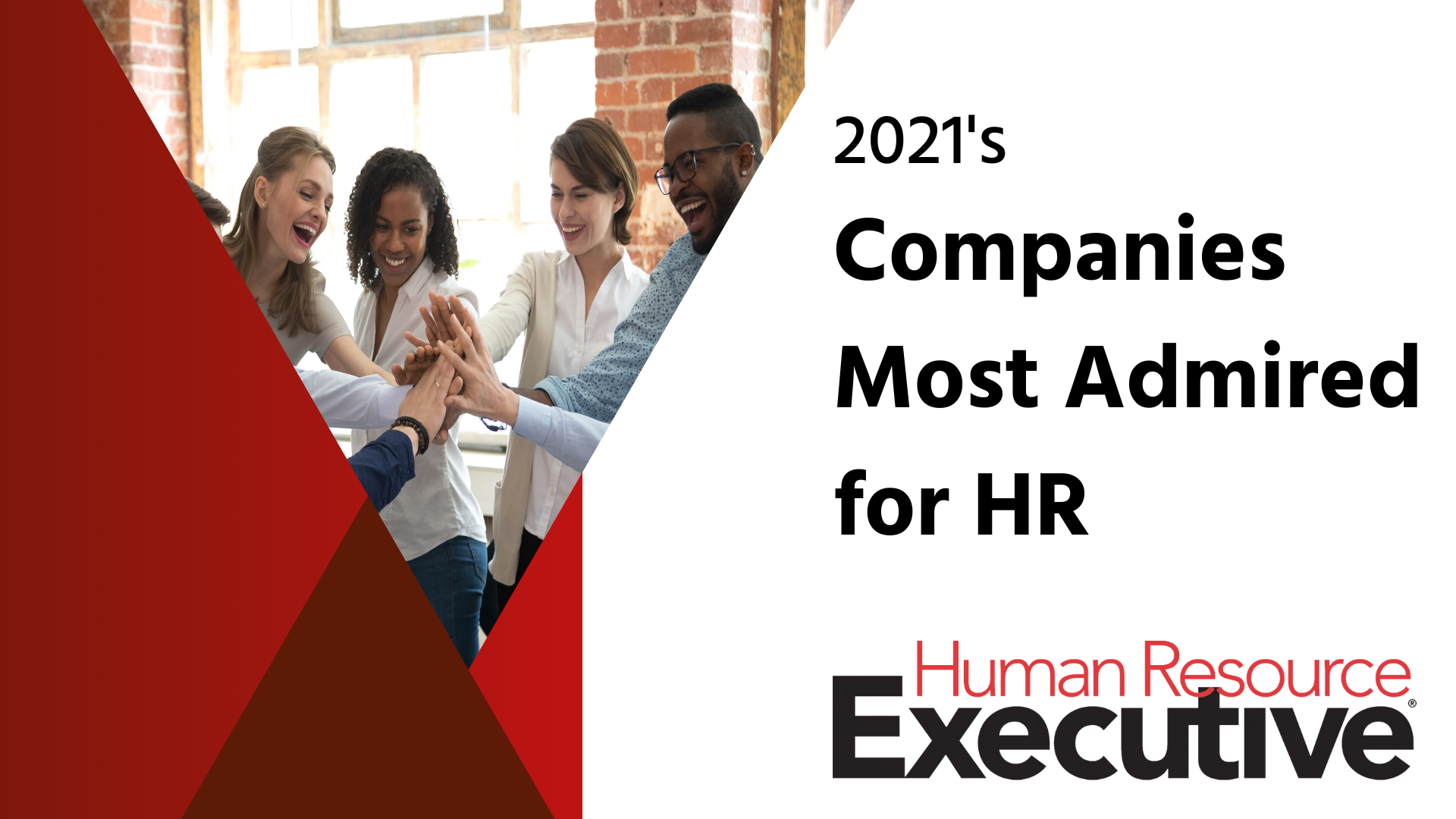For businesses around the globe, nothing has been “business as usual” for more than a year-and-a-half. Everything has shifted, then shifted again. As soon as we seem to gain a foothold, the next disruption hits–whether it’s the pandemic, protests over social justice or political upheavals.
As a result of all this change, the balance of power in organizations has shifted too–away from executives and toward the people as a whole. Today, businesses are being forced to refocus from an inward “me” perspective to an outward “we” viewpoint.
New: The FDA just authorized booster shots. What should employers do?
Where some organizations have faltered over the last 18-plus months, others have transformed and continued to flourish. What makes these organizations different?
Let’s take a closer look.
Who are the World’s Most Admired Companies?
Each year, Korn Ferry partners with Fortune magazine to identify the World’s Most Admired Companies (WMACs) and the business practices that make them both highly regarded and highly successful.

In the past, our research has focused on a wide range of topics, including talent attraction and retention, leadership development, corporate culture, diversity and inclusion, and organizational agility. With companies facing rapid change, this year we examined the steps that organizations are taking to transform their workforces for future performance and growth.
Our findings reveal that WMACs (organizations that score in the top half of their industries in the Fortune WMAC rankings) differ from their peers (companies also participating in the rankings but scoring lower) in five key areas.
- Strategic workforce planning: WMACs have greater clarity on their future needs.
Strategic workforce planning is the practice of mapping an organization’s people strategy with its business strategy so they work in sync. This approach delivers two critical advantages. It helps leaders understand whether they have or can obtain the workforce needed to execute their business strategies. It also assists HR leaders in reorganizing, shaping and deploying the workforce to deliver on their companies’ business objectives. When done well, strategic workforce planning helps to ensure that organizations have the right workforce, today and tomorrow, at the right cost.

In this year’s study, we saw that WMACs engage in strategic workforce planning more regularly than their peers. Just over three-quarters (77%) of WMAC executives indicate that their organizations conduct strategic workforce planning once or more per year compared to 69% of peer company executives.
Those efforts translate to a more forward-looking workforce view. Nearly two-thirds (64%) of WMAC executives say that their organizations have a good understanding of their workforce needs two or more years into the future versus just over half (54%) of peer company executives.
Tips for leaders
With the nature and structure of work in flux, it’s time to stop thinking of work in terms of jobs and start thinking about it in terms of capabilities. Through regular strategic workforce planning, you can forecast future needs and identify the skills and mindsets you need to execute your strategy. Then you can focus on acquiring talent with those skills and mindsets, whether through recruitment or by reskilling and upskilling your current employees.
- Attracting talent: WMACs focus on employee development, strong employee value propositions and a sense of a purpose when hiring.
Even before the pandemic, the talent pool had been shrinking. COVID-19 then accelerated the talent crunch to crisis levels, leaving most organizations struggling to find qualified candidates.
 What’s even worse is that the lack of capable candidates has been accompanied by the Great Resignation. Attrition rates are expected to continue swelling in the coming year, according to 55% of professionals in a survey we conducted in September. To remain competitive in the market–or to even survive–organizations need to adopt more creative ways to recruit talent.
What’s even worse is that the lack of capable candidates has been accompanied by the Great Resignation. Attrition rates are expected to continue swelling in the coming year, according to 55% of professionals in a survey we conducted in September. To remain competitive in the market–or to even survive–organizations need to adopt more creative ways to recruit talent.
What will it take to draw in the needed talent? Asked to identify the most important criteria for employees in choosing an organization in the future, executives in WMAC and peer companies agree that creating a “sense of purpose and meaning in work” and “employer reputation or employer value proposition” rank high on the list. WMAC executives, however, place more emphasis on “supporting continuous growth and development” and “offering flexible and personalized career paths.”
Tips for leaders
Moving into the new year, organizations will have to think of new ways to attract and retain talent. These methods include:
· Compensation, benefits and flexibility: Organizations may need to offer sign-on bonuses and increase their starting salaries to compete for talent in the market. Enticing senior employees to stay may require new benefits, including long-term incentives such as employee stock options, sabbaticals and wellness benefits such as on-site childcare and education reimbursements. In addition, more employees are looking for remote or hybrid work arrangements or at least more flexibility in their schedules.
· Learning and development: WMACs’ focus on employee development is well-placed. Analyses across Korn Ferry’s global employee opinion database consistently show that employees’ confidence in their ability to achieve their career objectives in an organization is a top driver of engagement and retention. Organizations will need to take a personal approach to employee development, giving employees more freedom and flexibility to learn new skills.
· Diversity, equity and inclusion: The more inclusive your hiring practices, the wider your talent pool. When the pool expands, it’s easier for you to hire top candidates more quickly, even for niche and hard-to-source roles. To widen your pool, look for talent in nontraditional areas and consider dropping traditional qualification requirements, such as certain degrees, that may disproportionately–and unnecessarily–exclude underrepresented talent.
· Purpose: Although it used to be assumed that only younger employees wanted their employers to put purpose first, now many leaders are rethinking their own career paths to ensure that they’re working toward goals that they’re passionate about. Organizations need to take steps to engage their employees–at every level–by helping them connect to the greater good behind their work.
In short, organizations should review every lever available for building and strengthening their relationships with individual talent.
- Upskilling and hiring: Meeting emerging workforce demands will be critical, and WMACs are up to the challenge.
Now that organizations can’t rely on a steady supply of external talent, they must look inward. Upskilling and reskilling employees can fill talent gaps and prevent attrition by engaging talent with new opportunities to learn, develop and grow.
 For WMAC executives, aligning talent with emerging demands is a critical focus area. Nearly two-thirds (63%) rate either “reskilling and upskilling current workers” or “hiring talent to staff new capabilities” as their biggest workforce challenges. By contrast, fewer than 25% view their top workforce priority as either “exiting talent no longer needed” or “understanding where labor costs can be reduced or optimized.”
For WMAC executives, aligning talent with emerging demands is a critical focus area. Nearly two-thirds (63%) rate either “reskilling and upskilling current workers” or “hiring talent to staff new capabilities” as their biggest workforce challenges. By contrast, fewer than 25% view their top workforce priority as either “exiting talent no longer needed” or “understanding where labor costs can be reduced or optimized.”
WMACs also have a distinctive level of confidence in responding to these workforce challenges. Better than half (54%) of WMAC executives give their organizations high marks for developing people for new or different work versus 39% of peer company executives. And 76% percent of WMAC executives view their organizations as effective in hiring the right people, compared with 68% of executives in peer companies.
Perhaps reflecting their confidence, WMAC executives plan to commit resources to respond to these challenges. Seventy-eight percent say that their organizations’ greatest talent investments over the next five years will be in either “upskilling talent” or “acquiring talent.”
Tips for leaders
Start building more internal mobility by investing in specialized training, coaching and development programs. Improving your employees’ hard skills, such as programming and data analysis, as well as their soft skills, such as organizational awareness and learning agility, will help your workforce be ready to take on the jobs of tomorrow–and seeing how they can progress up the career ladder will build greater loyalty to your organization in the process.
- Learning agility: A key attribute in hiring leaders and employees
 We’re working and living through an age of uncertainty and unpredictability. As the pace of change accelerates, and as disruptions continue to arise, organizations and people must adapt. Leaders and employees who are better able to remain flexible and adapt their behavior to changing situations have a high level of learning agility.
We’re working and living through an age of uncertainty and unpredictability. As the pace of change accelerates, and as disruptions continue to arise, organizations and people must adapt. Leaders and employees who are better able to remain flexible and adapt their behavior to changing situations have a high level of learning agility.
Time and again, Korn Ferry’s research has shown that a growth mindset, fueled by continuous learning, is an essential attribute for leading in a changing world. Leaders must be willing to learn constantly, consider concepts that they may not understand and embrace approaches that may not be traditional or familiar.
What do WMACs look for when hiring leaders and employees? WMACs understand that the future of work isn’t about filling positions. It’s about developing talent that can respond flexibly to new opportunities and challenges. For leaders and employees, WMACs prioritize “learning agility and curiosity” over “career history and experiences.” And the focus on what both groups can learn and apply ahead of what they have done only grows larger as WMACs look out to the future.
Tips for leaders
To stay competitive in today’s market, you need leaders and employees who are nimble, open to change and new ideas, willing to take risks, flexible and comfortable with ambiguity. All of these attributes are key to thriving in new, disruptive situations.
You should start determining your organization’s baseline agility by assessing your workforce. You can use the results to determine where you need to better align your talent with your strategy by putting the most agile talent into mission-critical roles and developing potential talent to fill gaps. You should also coach leaders to encourage their teams to develop their learning agility through both training and work projects.
- Performance management: WMACs more effectively capture team contributions and employees’ true performance.
Performance management is broken for many organizations. The way that organizations create value has changed, but performance management systems haven’t.
There are a series of disconnects in the traditional performance model:
- Performance management should drive future behavior, not reward past performance.
- Traditional systems reward individual achievement at the expense of collaboration and teamwork.
- Annual goal setting and reviews may not adequately reflect the impact of employee contributions on business outcomes in dynamic environments.
- Focusing more on evaluation and less on coaching sends employees mixed messages and doesn’t deliver results.
We know from recent research on organizational agility that WMACs manage performance more effectively in team-based contexts. Better than two-thirds (67%) of WMAC executives indicate that their performance management and reward programs are effective in assessing and rewarding team (versus individual) performance, as compared with 58% of peer company executives.
Likewise, WMACs are more successful in getting to the heart of an employee’s performance. Fifty-nine percent of WMAC executives say that their organizations are effective in evaluating employees’ real performance versus 51% of peer company executives.
Tips for leaders
Don’t try to fix a broken system; transform it. Unfortunately, there’s no one-size-fits-all model to follow. The best approach is to ensure that your performance management aligns with your culture, strategy and value creation model.
Whatever model you choose, its focus should be forward-looking, accelerating future performance rather than revisiting the past. Offer frequent–not just annual–performance coaching that evaluates how employees have made an impact as individuals, contributed to others’ success and leveraged others’ work. This approach aligns employee effort and business outcomes and increases employee engagement and enablement while improving performance.
Conclusion: The flipside of disruption is reinvention.
The theme of 2020 and 2021 was disruption. Organizations changed because they had to, not because they wanted to. But in 2022, that impromptu reinvention will become intentional.
Organizations that want to thrive–rather than merely survive–in the coming years will need to respond to changes not just in the market but also in their internal power dynamics. They must recognize that it’s time to ensure that work works for everyone.
If companies can harness the agility and flexibility shown by their workforces, they have an opportunity to reinvent themselves for a new age–an age of shortages, climate change, digital acceleration, emerging technology and transient consumer demands. And, in the process, they also have the opportunity to become as successful as the World’s Most Admired Companies.

